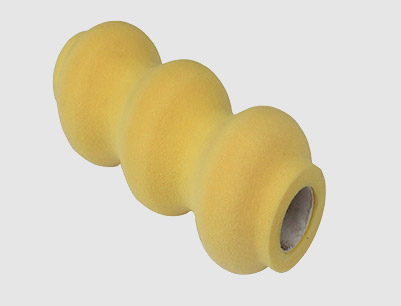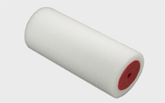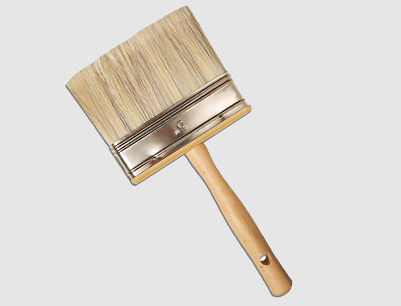Everything You Need to Know About Foam Paint Roller Covers
Aug. 22, 2025When it comes to painting walls, furniture, or decorative finishes, the choice of roller cover makes a big difference in the final result. Foam paint roller covers are designed to provide smooth, streak-free finishes, especially on flat surfaces and projects requiring a refined touch. Unlike traditional fabric rollers, foam rollers are lightweight, easy to handle, and ideal for water-based paints or glossy coatings. But when exactly should you use one, and how can you get the best results? Let’s dive in.

How to Apply Paint with a Foam Roller
Using a foam roller is simple, but proper technique ensures professional results:
Load the roller correctly – Dip the foam roller into the paint tray, then roll it back and forth to evenly distribute paint without oversaturation.
Apply in light coats – Start with a “W” or “M” motion on the surface, then fill in the gaps with smooth, overlapping strokes.
Maintain steady pressure – Avoid pressing too hard, as this may cause streaks or bubbles.
Work quickly on fast-drying paints – Foam rollers are particularly effective for latex and enamel paints that require thin, even layers.
This technique reduces roller marks and creates a fine, polished finish.
When to Use a Foam Paint Roller vs. a Traditional Roller
Knowing when to use foam vs. traditional fabric rollers is key:
Use foam rollers when:
Painting cabinets, doors, or furniture where a smooth finish is essential.
Applying high-gloss, satin, or semi-gloss coatings.
Working on smaller, flat surfaces with minimal texture.
Use traditional rollers when:
Covering large walls or ceilings quickly.
Applying paint on textured surfaces such as stucco or brick.
Using thicker paints that require deeper coverage.
Simply put, foam rollers excel in detail and finish work, while traditional rollers are better for coverage and rough surfaces.
Best Practices for Using Foam Paint Roller Covers
To maximize results and roller life:
Choose the right size – Small 4-inch foam rollers work best for furniture, trims, and cabinets, while larger rollers suit walls.
Apply multiple thin coats – Foam rollers don’t hold as much paint as fabric rollers, so two or more layers may be necessary.
Avoid overloading – Too much paint can cause dripping and uneven coverage.
Work in sections – Paint small areas at a time to prevent visible roller marks.
These practices ensure efficiency and quality in every project.
How to Clean and Maintain a Foam Paint Roller
Proper cleaning extends the life of foam roller covers:
Rinse immediately – Wash the roller in warm, soapy water after use (for water-based paints).
Squeeze gently – Avoid twisting, which can tear the foam.
Use paint thinner – For oil-based paints, soak the roller in mineral spirits before rinsing.
Dry properly – Stand the roller upright or hang it to air dry completely before reuse.
Cleaning helps prevent hardened paint from ruining the foam surface.
What Is a Foam Paint Roller Cover Used For?
Foam paint rollers are widely used for:
Smooth walls and ceilings requiring a refined finish.
Doors, trims, cabinets, and wooden furniture.
Gloss and enamel paints that need even distribution.
Touch-up jobs where precision matters.
They are not ideal for textured surfaces since foam cannot reach into grooves.
Advantages of Foam Rollers for Painting
Some of the key benefits include:
Smooth finish – No lint or texture left behind.
Lightweight design – Easier to control, especially for beginners.
Even paint distribution – Reduces streaking and roller marks.
Cost-effective – Foam rollers are affordable and often disposable.
Quick to swap – Ideal for projects requiring multiple color changes.
These advantages make them a favorite for detail-oriented painting projects.
Foam Roller vs. Microfiber Roller for Painting
Both foam and microfiber rollers have unique benefits:
Foam roller: Best for smooth finishes on furniture, cabinets, and trim. Works well with gloss or enamel paints but holds less paint.
Microfiber roller: Holds more paint, making it better for large walls and ceilings. Provides good coverage even on semi-textured surfaces.
In short: choose foam for precision and smoothness, microfiber for coverage and versatility.
Final Takeaway:
A foam paint roller cover is a go-to tool when you need flawless, streak-free finishes on smooth surfaces. Use it for furniture, cabinets, and detail work where appearance matters most. By understanding when and how to use foam rollers—and how they compare to other roller types—you can save time, reduce waste, and achieve professional painting results at home or on the job.















